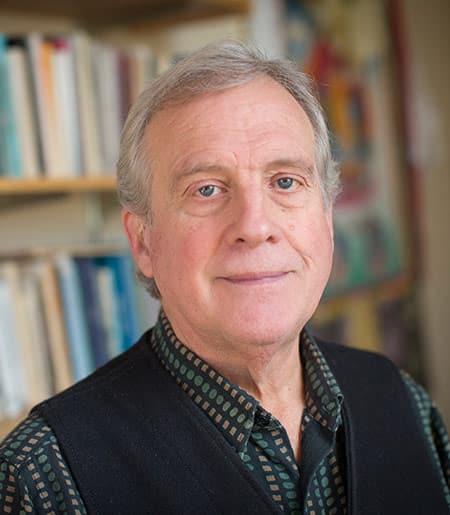Overview
My initial research among the Tamang - a Tibeto-Burman speaking population in Nepal - focused on ritual syncretism or hybridity: the relations among Buddhist, shamanic, and sacrificial practices in a society where people married their cross cousins. Although I sustain core interests in theories of ritual and myth broadly conceived, I have also turned my attention to how ritual and myth play out in relation to the broader context of power in society. I am now in the midst of writing a book based on a second major field project of a more ethnohistorical kind. Along with Kathryn March, I have been reconstructing the nature of a state system of forced labor through the memories of villagers and through archival evidence. This feudal system continued until the 1960s in some Tamang locales and its affects are still critical to an understanding of the contemporary situation in Nepal. This project has led me to expand my early research focus on ritual and social organization not only into questions of state formation, culture and politics, ritual as social production, and social violence but questions related to the history of anthropology of the Himalayas, transnational social relations in South Asia, and the anthropology of power, especially the nature of symbolic or sacred power. Along with this project, I have also been closely following recent developments in identity or ethnic politics in Nepal and studying the affects of the Maoist insurgency on Tamang villages as well as ritual developments. I have a strong commitment to theoretically engaged ethnography as the principle mode of knowledge production in anthropology. I also sustain very close ties to both the people with whom I work in Nepal and to academic institutions in Nepal where, over the last decade, we have developed a joint program with Tribhuvan University.
Research Focus
- ritual syncretism: the relations among Buddhist, shamanic, and sacrificial practices in a society where people married their cross cousins.
- how ritual and myth play out in relation to the broader context of power in society
- reconstructing the nature of a state system of forced labor through the memories of villagers and through archival evidence
- the history of anthropology of the Himalayas
- transnational social relations in South Asia
- the anthropology of power, especially the nature of symbolic or sacred power
- identity or ethnic politics in Nepal and studying the affects of the Maoist insurgency on Tamang villages
- theoretically engaged ethnography as the principle mode of knowledge production in anthropology
Publications
Academic Articles
2007 Outcastes in an ‘Egalitarian’ Society: Tamang/Blacksmith Relations from Tamang Perspective. Occasional Papers in Sociology and Anthropology 10:124-140.
2006 Transcendence, Power, and Regeneration in Tamang Shamanic Practice. Critique of Anthropology 26(1):87-101.
2006 Violence, Non-violence, Sacrifice, Rebellion, and the State. Studies in Nepali History and Society 11(1):31-64.
2000 Derision, Exorcism, and the Ritual Generation of the Power. American Ethnologist 27(4):927-949.
1999 Local Production/Local Knowledge: Forced Labor From Below. Studies in Nepali History and Society 4:5-64.
Books
1994 Mutual Regards: America and Nepal Seen through Each Other's Eyes. Kathmandu: Jivan Support Press.
1989 Order in Paradox: Myth, Ritual, and Exchange among Nepal's Tamang. Ithaca, NY: Cornell University Press (CUP).
Chapters
2012 Contingency, Collaboration, and the Unimagined over Thirty-five Years of Ethnography. In Returns to the Field: Multitemporal Research And Contemporary Anthropology. Signe Howell and Aud Talle, eds. Pp. 95-122. Bloomington, IN: Indiana University Press.
2009 All Politics is Local. In Views from the Field: Anthropological Perspectives on the Constituent Assembly Elections. David Hines Holmberg, ed. Pp. 9-22. Kathmandu: Social Science Baha.
Conference papers
2008 Proceedings of the International Conference of the Sociological/ Anthropological Society of Nepal. For Ethnography. In Social Sciences in a Multicultural World. Pp. 9-19. Kathmandu: SASON.
